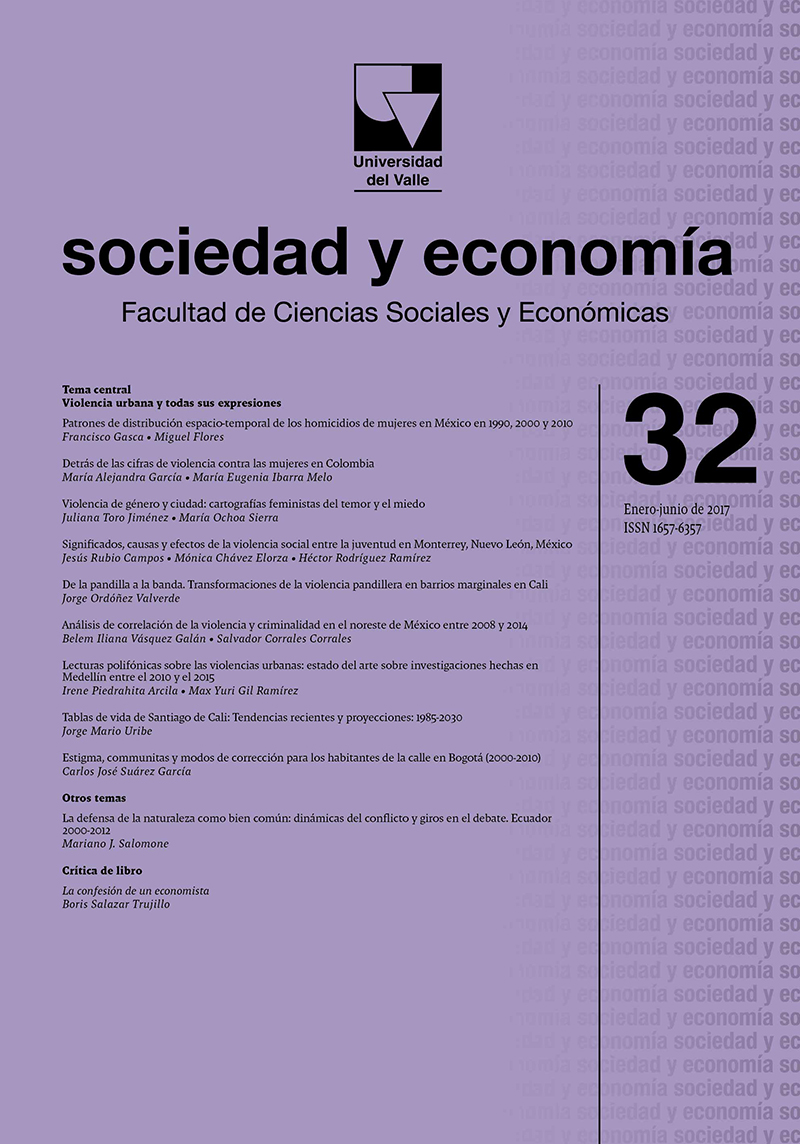Stigma, Communitas and Corrective Ways to Homeless People in Bogotá (2000-2010)
Published:
2017-01-15
Keywords:
Homeless, violence, social cleansing, social control.Main Article Content
This essay reflects, from a symbolic perspective, about the ways in which the contemporaryColombian society faces up to the existence of homeless people. From the “Calle de El Cartucho”case and based in researches about the institutional offer to homeless people in Bogotá,it tests two theoretical assumptions: the stigma in Erwin Goffman, and the communitas inVictor Turner. In this way, the paper shows the social representations that have about homelesspeople, governmental, nongovernmental and religious professionals that work with thispopulation, and their association with danger and vice. Then, it observes the ways in whichhomeless people considered outsiders undergo a “corrective” process, similar to the rites ofpassage observed in organic societies. Finally, it presents two general options offered by thecontemporary society to those homeless people who inhabit the city: the possibility of “returnto life” thanks to therapies, or die victims of the “social cleansing”
1.
Suárez García CJ. Stigma, Communitas and Corrective Ways to Homeless People in Bogotá (2000-2010). soc.eco [Internet]. 2017 Jan. 15 [cited 2025 Dec. 31];(32):195-216. Available from: https://sociedadyeconomia.univalle.edu.co/index.php/sociedad_y_economia/article/view/3884
Downloads
Download data is not yet available.
Revista sociedad y economía editada por la Facultad de Ciencias Sociales y Económicas de la Universidad del Valle se encuentra bajo una Licencia Internacional Creative Commons Atribución - No comercial 4.0
Basada en una obra en http://sociedadyeconomia.univalle.edu.co

